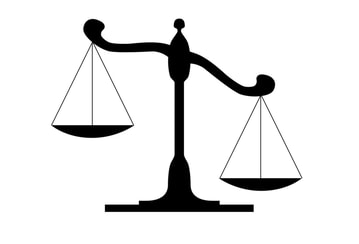Why use short words?In guidelines for ensuring plain, readable English, we’re often advised to prefer simple words. This mostly means preferring shorter words to longer ones, although we shouldn’t take this as an absolute rule. The words also should be well known to our readers. As Ernest Gowers put it in The Complete Plain Words, ‘If the choice is between two words that convey the writer’s meaning equally well, one short and familiar and the other long and unusual, of course the short and familiar should be preferred.’ What makes them short?But what do we mean by ‘short’ words? In written language, the most obvious measure is the number of letters. However, the number of syllables also makes a difference to readability – perhaps even more so. On average, of course, the more letters a word has, the more syllables it has; but there are glaring exceptions. For example, let’s compare two words with similar meanings: area and zone. Both are nice and compact on the page, with just four letters – but area has three syllables, compared with just one in zone. Which is more plain? You could argue that area wins the day because it’s more familiar, but it’s a close call. Here’s a pair of related words with an even bigger contrast: ideas and thoughts. The first word, again, has three times as many syllables as the second, but it has barely half as many letters. And then there’s myopia, which manages to pack four syllables into its six letters – just as many as the much more space-consuming (but better-known) alternative short-sightedness. Why the syllable count mattersWhen we’re reading, most of us ‘say’ the words in our head. The more syllables there are in your writing, the more work your reader will need to do. If there are too many, it will take a long time for them to work through a sentence, and they might struggle to keep a handle on its overall meaning. This, of course, is also an argument for keeping sentences short as well as words. In his Oxford Guide to Plain English, Martin Cutts warns that avoiding multisyllabic words isn’t always a good move, as it often means using more words. But if the syllable count per word is just one of the factors you look at, along with the word count per sentence, you will be dealing with that potential problem. Another useful measure is the number of syllables per sentence, which takes care of both of these factors to some extent. Also, if there are too many single-syllable words, writing can seem monotonous and lacking in ‘colour’, with a staccato effect that might annoy the reader. A lot depends on the type of content and its target readership. For informational material aimed at a wide audience, some studies and guidelines suggest that an average of around 1.5 syllables per word is a good compromise between keeping it plain and keeping the reader awake. Clashing consonantsThe length of a word, whether in terms of letters or syllables, isn’t the only thing that can affect its readability. If it has a cluster of consonants that are all pronounced individually – for example, in instigate, altruism or obstruct – this will slow the reader down as they read the text ‘out loud’ in their head. (This isn’t a problem in a word such as nightshirt – although it has five consonants in a row, they only make two sounds.) Even where there’s only a pair of consonants, they might not go well together pronunciation-wise. This can have a slight jarring effect for the reader: for example, subpart and enmity. TestingIt’s interesting that the best-known readability tests are based on words per sentence and syllables per word, taking no account of the number of letters. Along with the average word count per sentence, the Flesch Reading Ease and Flesch–Kincaid Grade Level measures both use the average syllable count per word, while the Gunning Fog Index checks the percentage of ‘complex’ words. (A ‘complex’ word is defined as one with three or more syllables, excluding proper nouns, familiar jargon and compound terms. Common suffixes such as ‘-ed’ and ‘-ing’ aren’t included in the syllable count.) These measures are only of limited value, especially as they take no account of what the words mean. But perhaps their emphasis on counting syllables is one of their strengths. Summing upThere’s no magic wand that can ensure writing is plain and readable – a lot of factors come into play. But if you’re careful about how many syllables your words have, this will clearly help to make things go smoothly. It’s just one way of doing something that writers and editors should always do: thinking about the reader.
0 Comments
Your comment will be posted after it is approved.
Leave a Reply. |
Thoughts on Words
An editorial blog. Posts by Graham Hughes. Archives
July 2024
Categories |




